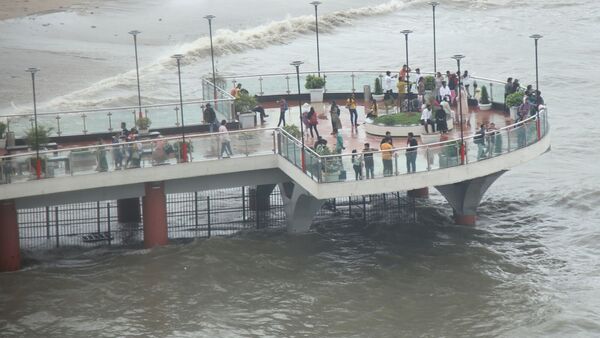
Education in Mumbai, India, is a dynamic and complex ecosystem that has evolved significantly over the years to accommodate the diverse needs of its population. Mumbai, the capital of the state of Maharashtra, is not only a major financial and commercial center but also a center of education and culture in India. In this essay, we will explain in detail the various aspects of the Mumbai education system, its historical background, current structure, challenges, and achievements. Mumbai, being the financial and entertainment hub of the country, provides students with unparalleled opportunities in the business, finance, and media sectors. Internship opportunities and industry connections are abundant, offering a practical edge to academic learning.
Historical background Education in Mumbai
The roots of formal education in Mumbai can be traced to the colonial era, when the British established educational institutions primarily to train clerks and administrators to serve their empire. Bombay University, established in 1857, was one of the earliest universities in India and played an important role in shaping higher education in the region.
During the pre-independence era, education was largely elitist and restricted to the privileged classes, with limited access to the general public. After independence, there was a significant push towards universal education and the democratization of educational opportunities.
The Government of India formulated various policies and initiatives to promote literacy and increase access to education among all sections of society. In Mumbai, many public and private schools, colleges, and universities were established to meet the growing demand for education.
Current Structure:
The education system in Mumbai is multi-tiered, consisting of primary, secondary, and higher education institutions. At the primary level, there are government-run and private schools affiliated with various boards, such as the Maharashtra State Board of Secondary and Higher Secondary Education (MSBSHSE), the Central Board of Secondary Education (CBSE), and the Indian Certificate of Secondary Education (ICSE).
Secondary education in Mumbai generally includes classes 9 to 12, where students prepare for board examinations, which are important for further academic and career prospects. Higher secondary schools in Mumbai offer a variety of streams, including science, commerce, and the humanities, allowing students to choose based on their interests and career aspirations.
At the higher education level, Mumbai boasts many prestigious institutions, including the University of Mumbai, the Indian Institute of Technology Bombay (IIT Bombay), the Tata Institute of Social Sciences (TISS), and many others. These institutions offer undergraduate, postgraduate, and doctoral programs in various disciplines ranging from engineering and technology to the arts, commerce, and social sciences.
Apart from formal education, Mumbai also has a rich ecosystem of coaching institutes and tuition centers that cater to students preparing for competitive exams like the Joint Entrance Examination (JEE), the National Eligibility and Entrance Test (NEET), and various entrance exams. Provides. management and other professional courses.
Challenges:
Despite the progress made in recent decades, the Mumbai education system faces several challenges that hinder its effectiveness and inclusiveness. One of the primary challenges is the issue of access and equity, especially in the context of socio-economic inequalities.
Although there are high-quality educational institutions in the affluent areas of the city, students from economically weaker sections often do not have access to quality education due to factors such as inadequate infrastructure, lack of qualified teachers, and financial constraints.
The second challenge is the issue of quality and relevance of education. With rapid advancements in technology and changes in the global economy, there is a growing need to update curriculum and teaching methods to ensure that students are equipped with the necessary skills and knowledge to thrive in the 21st-century world.
However, the pace of curriculum reform and teacher training often lags, leading to a gap between what is taught in schools and colleges and the demands of the modern workforce.
The Mumbai education system also grapples with issues such as overcrowded classrooms, teacher shortages, inadequate infrastructure, and outdated pedagogical practices.
These factors affect students’ learning outcomes and contribute to high dropout rates and low retention rates, especially among marginalized communities.
Achievements:
Despite these challenges, the Mumbai education system has achieved important milestones and successes over the years. A notable achievement is the increase in literacy rate, which has steadily increased due to the concerted efforts of the government and various stakeholders.
The city has also produced a large number of successful professionals and scholars who have made significant contributions in their respective fields at the national and international levels.
Furthermore, educational institutions in Mumbai have received recognition
Acclaimed on the global stage, many universities and research institutes are ranked among the best in the world.
The city’s vibrant academic and intellectual community fosters innovation, research, and collaboration, which contributes to the overall development of the society and economy.
Conclusion: Education in Mumbai
Ultimately, the education system in Mumbai is a complex and multifaceted ecosystem that plays a vital role in shaping the future of its residents and the city. Although there are challenges to be addressed, including issues of access, quality, and relevance, there are also many achievements and successes to celebrate. By addressing these challenges and building on its strengths, Mumbai can develop as a center of excellence in education and contribute to the nation’s social, economic, and cultural development. Mumbai ranks first among the best places to study in India. Mumbai, formerly known as Bombay, is the most populous city and also the wealthiest city in India.








